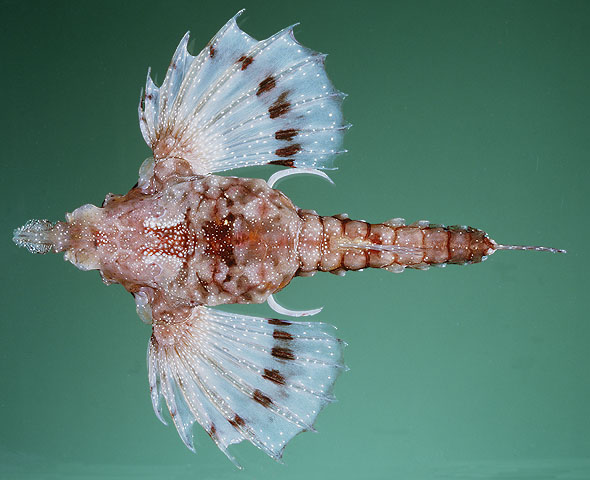| Pegasidae (Seamoths) |
| 7.6 cm SL (male/unsexed) |
|
demersal; marine; depth range 80 - 291 m |
| Eastern Central Pacific: known only from the Hawaiian Islands. |
|
Dorsal spines (total): 0-0; Dorsal soft rays (total): 5-5; Anal spines: 0-0; Anal soft rays: 5-5; Vertebrae: 19-19. Body color olivaceous to yellow olive dorsally and laterally; whitish ventrally; 3 indistinct, double bands of light red on carapace and tail. Species with 3 pairs of dorsolateral body plates; 4 pairs of ventrolateral body plates; a pair of deep pits on dorsal surface of head; 8 (rarely 9) mobile tail rings; concave suborbital shelf, eyes visible in ventral view. Dorsal and ventral ridges of rostrum almost equally expanded with laterally directed denticles. Medial spine on dorsal surface of last tail ring posteriorly directed. |
| Inhabits moderately deep water (Ref. 1418). Benthic (Ref. 58302). Larvae and juveniles are often collected in neuston and plankton nets, and midwater trawls (Ref. 1418). |
|
Least Concern (LC); Date assessed: 08 July 2016 Ref. (130435)
|
| harmless |
Source and more info: www.fishbase.org. For personal, classroom, and other internal use only. Not for publication.

